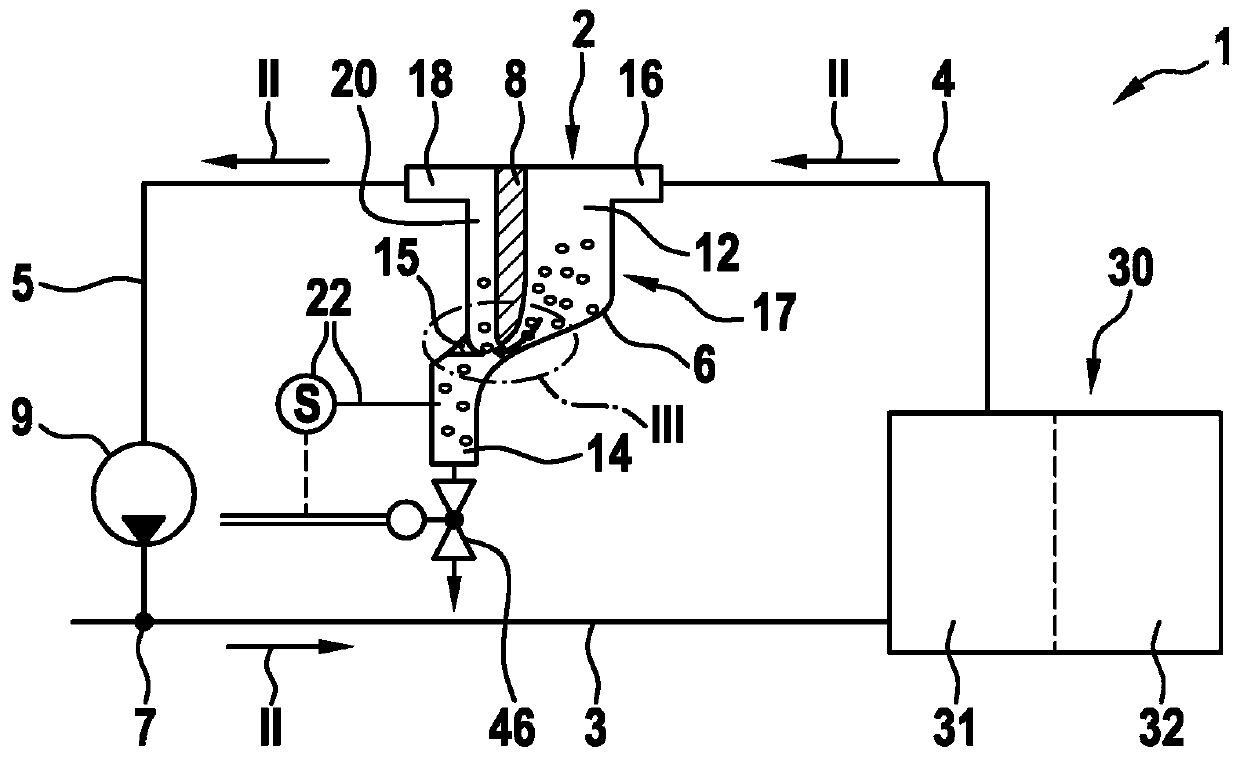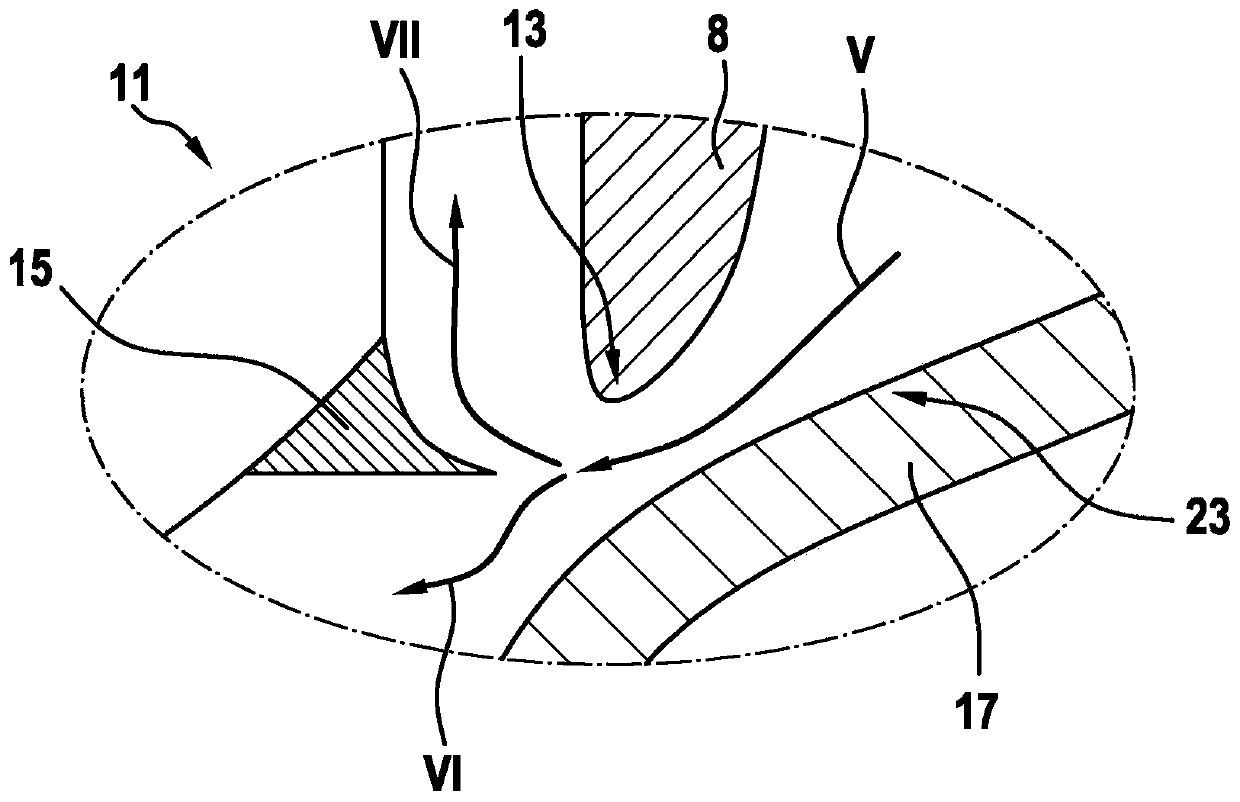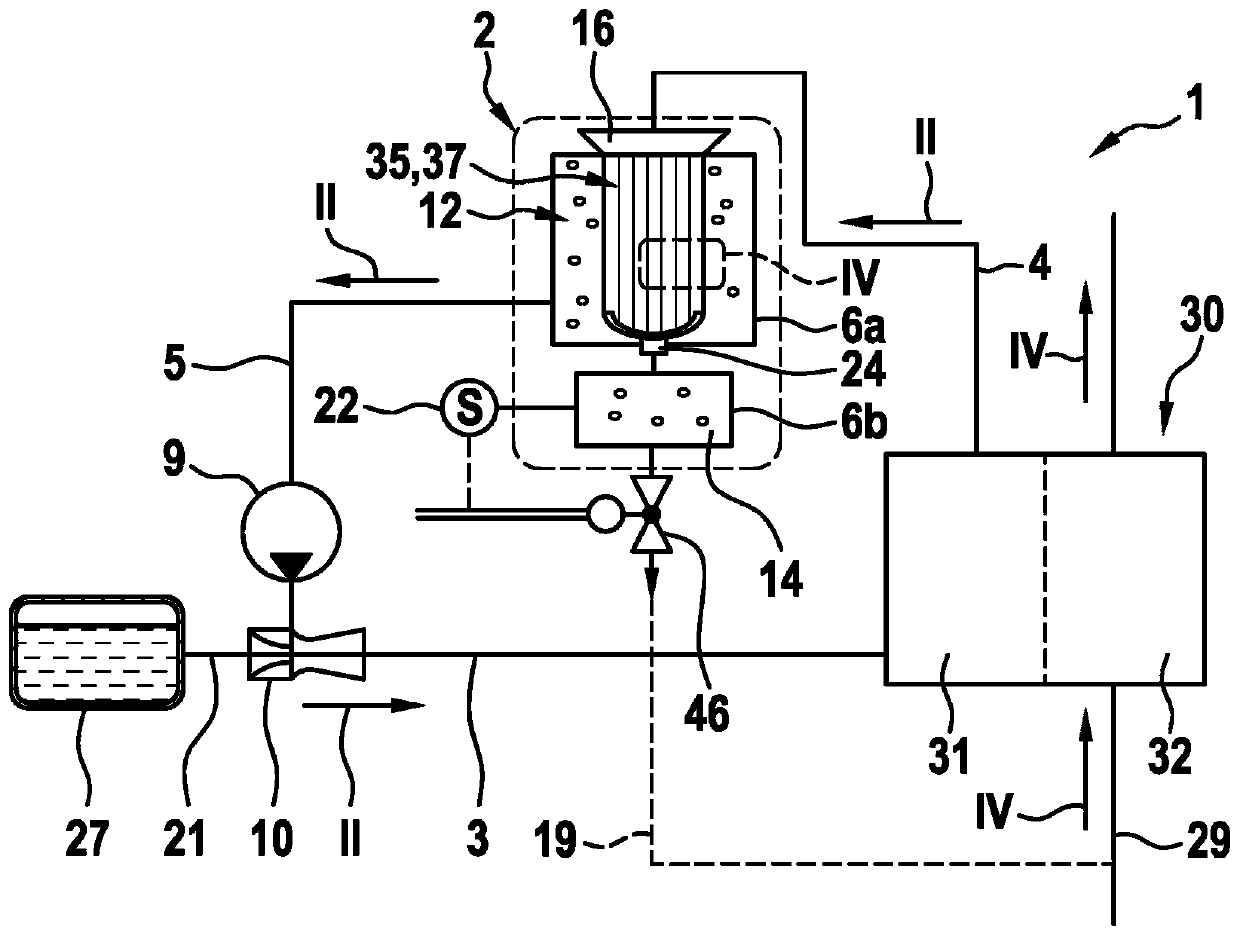Gas-liquid separator for separating at least one liquid component from gaseous component
A gas-liquid separator, liquid technology, applied in separation methods, semi-permeable membrane separation, dispersed particle separation, etc., can solve problems such as component separation, and achieve the effect of improving efficiency, saving costs, and reducing demand
- Summary
- Abstract
- Description
- Claims
- Application Information
AI Technical Summary
Problems solved by technology
Method used
Image
Examples
Embodiment Construction
[0022] according to figure 1 and figure 2 The diagram of shows a fuel cell system 1 with a first embodiment of a gas-liquid separator 2 according to the invention, wherein the gas-liquid separator 2 removes liquid components, especially H 2 O addition to the gaseous component N 2 Separate from medium. Here, component H 2 O and N 2 By means of the centrifugal principle and the medium, especially the component H of the medium 2 The separation is carried out by means of the gas-liquid separator 2 according to the invention.
[0023] exist figure 1 shows a fuel cell system 1 in which a fuel cell 30 , a gas-liquid separator 2 and an optional recirculation pump 9 are fluidically connected to one another by means of lines. The fuel cell 30 has an anode region 31 and a cathode region 32 and is used, in particular in vehicles, to 2 and oxygen, ie O 2 reaction to generate energy. Here, energy can be generated in the form of electrical energy. In this case, the gas-liquid sep...
PUM
 Login to View More
Login to View More Abstract
Description
Claims
Application Information
 Login to View More
Login to View More - R&D
- Intellectual Property
- Life Sciences
- Materials
- Tech Scout
- Unparalleled Data Quality
- Higher Quality Content
- 60% Fewer Hallucinations
Browse by: Latest US Patents, China's latest patents, Technical Efficacy Thesaurus, Application Domain, Technology Topic, Popular Technical Reports.
© 2025 PatSnap. All rights reserved.Legal|Privacy policy|Modern Slavery Act Transparency Statement|Sitemap|About US| Contact US: help@patsnap.com



